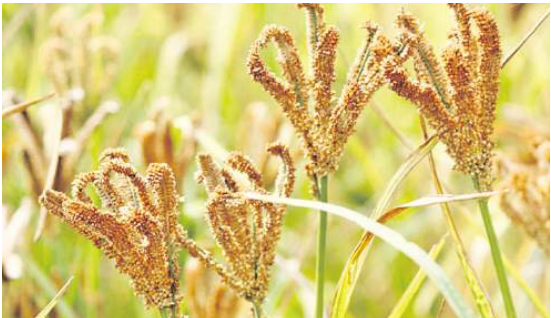Kenya’s food security future may hinge on crops long sidelined by modern diets. Experts warn that dependence on maize and wheat is risky amid climate change, pests, and rising lifestyle diseases. Finger millet and amaranth, once central to Kenyan culture, are now being revived as “opportunity crops” for their resilience, nutritional richness, and cultural ties. With policy backing under the Power of Diversity Funding Facility, these crops could combat malnutrition, empower smallholder farmers, and open new markets. The challenge is turning renewed interest into lasting change—through investment, awareness, and market support—so that neglected foods reclaim their place on Kenyan tables.
 Finger millet /AFA
Finger millet /AFA
Kenya cannot afford to depend on just a handful of staple foods, experts warn. Instead, the country must turn to resilient but often overlooked crops such as finger millet and amaranth.
Over time, the shift toward conventional staples, seen as easy to prepare and widely available, has pushed traditional foods to the margins. Yet this convenience has come at a cost: diminished dietary diversity, loss of cultural heritage, and missed opportunities for better nutrition and income generation.
For decades, smallholder farmers have sustained crops like finger millet and amaranth, passing down seeds and farming knowledge through generations. But weak markets, limited policy support, and the dominance of maize and wheat have kept their potential untapped.
Today, however, shifting conditions including climate variability, new pests and diseases, and rising lifestyle illnesses such as diabetes and hypertension are prompting a rethink.
“Since time immemorial, our grandparents consumed these nutritious crops, but we have neglected them,” said Evelyn Okoth, a farmer from Kabudi Agoro Community Seedbank in Kisumu. “Farmers, who largely determine family diets, should lead the revival of these opportunity crops.”
That revival is already underway. At a recent national consultation in Nairobi, stakeholders from government, research institutions, farmer organizations, NGOs, and the private sector selected finger millet and amaranth as Kenya’s priority “opportunity crops” under the Power of Diversity Funding Facility (PDFF).
The two-day consultation, supported by the Global Crop Diversity Trust (Crop Trust) and implemented by the Alliance of Bioversity International and CIAT (The Alliance) in partnership with the Kenya Agricultural and Livestock Research Organisation (KALRO), reviewed 42 underutilized crops. Finger millet and amaranth emerged as the most promising due to their nutritional richness, adaptability to climate change, cultural significance, market potential, and ability to engage women and youth.
“This is not just about saving seeds, it is about securing our future, diversifying diets, strengthening resilience, and empowering communities through sustainable markets,” said Dr. Gloria Otieno, Genetic Resources and Food Security Policy Specialist at The Alliance.
She noted that finger millet and amaranth are especially valued for their nutritional content rich in iron, calcium, protein, and micronutrients making them powerful tools in the fight against malnutrition and hidden hunger. “Beyond health, they are deeply tied to Kenya’s traditions, often used in porridge, weaning foods, and community rituals,” she added.
Dr. Desterio Nyamongo, Director of KALRO’s Genetic Resources Research Institute (GeRRI), stressed the risks of over-relying on a narrow set of staples.
“We must reclaim and sustainably use natural resources that are under threat. Depending on a narrow range of crops exposes us to risk,” he said.
His call was echoed by Edwin Garzon-Horta of Crop Trust, who warned of alarming global biodiversity loss. “We are losing species at an alarming rate. Conserving and utilizing neglected crops must be a collective priority,” he said.
Under the PDFF, Kenya will dedicate the next five years to conserving, producing, and promoting finger millet and amaranth. The initiative will support genebank preservation, strengthen value chains, and integrate scientific evidence into national and global food policies.
By placing finger millet and amaranth back at the heart of Kenya’s diets and markets, experts believe the country can achieve far more than healthier meals. These opportunity crops could generate jobs, boost resilience against climate shocks, and safeguard a cultural heritage that has nourished communities for centuries.






![[PHOTOS] Ruto joins State House families in worship](/_next/image?url=https%3A%2F%2Fcdn.radioafrica.digital%2Fimage%2F2025%2F09%2Fa6dc59b3-4273-4667-bd88-1fffcb5c00d3.jpg&w=3840&q=100)





